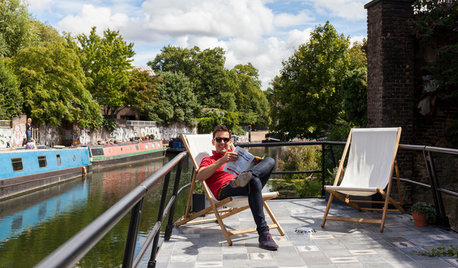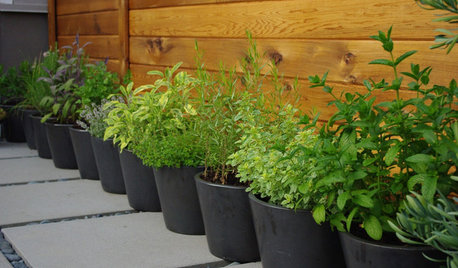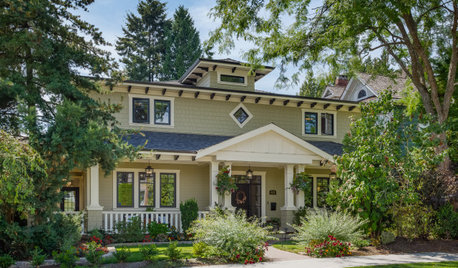Tops leaning on newly planted arborvitaes
kitababy
9 years ago
Related Stories

PLANTING IDEASGreat Garden Combo: Rose + Clematis for Small-Space Impact
We all need somebody to lean on. And when a rose supports a climbing vine, the results can totally transform a small garden
Full Story
LANDSCAPE DESIGNThe 7 Best Plant Types for Creating Privacy and How to Use Them
Follow these tips for using different kinds of plants as living privacy screens
Full Story
GARDENING GUIDESGrow Your Own Privacy: How to Screen With Plants and Trees
Use living walls to lower your home and garden's exposure while boosting natural beauty in your landscape
Full Story
HOMES AROUND THE WORLDMy Houzz: Small-Space Living on a Barge Awash With Smart Ideas
This newly built barge moored on London’s Regent’s Canal brims with clever designs and luxe touches, proving small can be very beautiful
Full Story
LOFTSHouzz Tour: Tying Together a Boston Loft
Walnut and other elements weave throughout a family’s condo, filled with multipurpose spaces and newly maximized views
Full Story
GARDENING GUIDES4 Herb Container Gardens for Fabulous Global Cuisine
Tingle your taste buds with the unbeatable taste of fresh herbs in your Italian, Asian, Mexican or French fare
Full Story
LANDSCAPE DESIGNHow to Incorporate Your Roofing Into the Landscape
Choose hardscape and plantings that work with your roof’s color, texture, shape and line
Full Story
GARDENING GUIDESWhat Are Your Spring Gardening Plans?
Tearing out the lawn? Planting edibles? Starting from scratch? Tell us what you plan to change in your garden this year
Full Story
GARDENING GUIDESGarden Myths to Debunk as You Dig This Fall and Rest Over Winter
Termites hate wood mulch, don’t amend soil for trees, avoid gravel in planters — and more nuggets of garden wisdom
Full Story
GARDENING AND LANDSCAPINGGrow a Lush Privacy Screen
No need to wait forever for patio privacy the green way. These 10 ideas will get your screening up and running in no time
Full Story









sc77 (6b MA)
jean001a
Related Professionals
70037 Landscape Architects & Landscape Designers · Horsham Landscape Architects & Landscape Designers · Jennings Landscape Architects & Landscape Designers · Richmond Heights Landscape Architects & Landscape Designers · Newcastle Landscape Architects & Landscape Designers · Arlington Landscape Contractors · Wake Forest Landscape Contractors · Belmont Landscape Contractors · Homewood Landscape Contractors · Lakeville Landscape Contractors · Lynn Landscape Contractors · Pahrump Landscape Contractors · Paterson Landscape Contractors · Plainview Landscape Contractors · Tamarac Landscape ContractorskitababyOriginal Author
sc77 (6b MA)
kitababyOriginal Author
ken_adrian Adrian MI cold Z5
kitababyOriginal Author
kitababyOriginal Author
sc77 (6b MA)
ken_adrian Adrian MI cold Z5
kitababyOriginal Author
jean001a